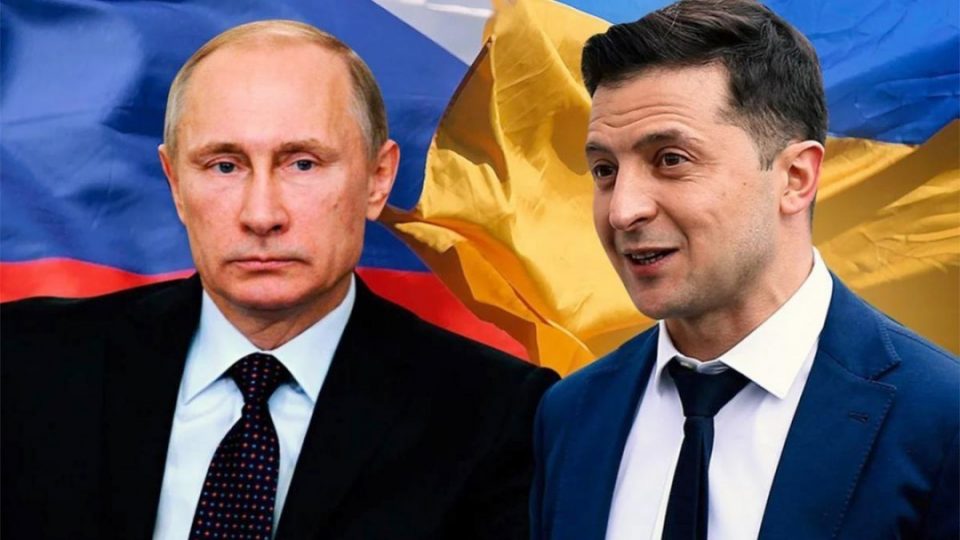By Kolawole Olaniyi
DIFFERENT opinions, ranging from the sublime to the ridiculous, have been dotting the internet since Russia under Vladimir Putin invaded Ukraine. The battle for the soul of the dollar, according to some, is intertwined with the invasion. De-dollarisation has been a key policy of Putin and Russia also belongs to a rising power de-dollarisation coalition, BRICS. But most of the commentaries saw beyond the façade; that the war is not between Ukraine and Russia. It is actually between two nations with the highest nuclear stockpiles (Russia and the United States).
The US may be the richest country economically but in terms of potential massive annihilation and destruction of the human race, it shares that power with Russia. One of the reasons the atomic weapon secret was leaked to Russia was that scientists feared that having the US alone with such weapons would mean living in a unipolar world that would confer on it the arbitrary use of power. So, if an adversary, like Russia, also possessed that weapon, mutually assured destruction would prohibit discretionary use of such weapon.
One thing has to be stressed before enunciating the western foibles that paved the way for the manifestation of the tyranny of Putin, which is that the Russian attack on Ukraine is an assault on world peace and smacks of fascism. The world needs to do more than impose economic sanctions on Russia. A nation like China, which has a strong taste in the suppression of human rights, as evident in its treatment of Taiwan, is carefully watching and measuring in both quantitative and qualitative terms the deterrents to be made of the Russian invasion. Having said that, elaborated below are the three different ways in which the West goofed.
Withdrawal of the US from Anti-Ballistic Missile Treaty: The importance of arms control treaties cannot be over-emphasised since the advent of atomic bomb. The development of a weapon that could annihilate the entire universe, irrespective of where it was launched from, underscores the importance of treaties in limiting the production and deployment of nuclear weapons. Both the United States and the defunct USSR, under the 1972 Anti-Ballistic Missile Treaty, were limited to two ABM complexes, with each complex having a limit of 100 anti-ballistic missiles. Because of Putin’s recognition of the ABM treaty as a cornerstone of world security, he felt totally dissatisfied with the reason adduced by President George Bush in 2002 for withdrawing the US from the treaty. By Putin’s calculation, the withdrawal has altered strategic balance and in order to restore balance, Russia will have to build offensive missiles that can evade any defence system.
It seems that Putin did live up to the expectation of his words. In his 2018 State-of-the-Union address, he, through animations, showed new missiles being built by Russia. One of them is the Sarmat Intercontinental Ballistic Missile, which he termed invincible and unstoppable by any current missile defense system in the world, or future missile defense systems. Photos of this missile have rented the social media space when Putin announced that nuclear weapons had been placed on red alert. Others that he boasted about included a new submarine missile, nuclear-powered cruise missile with unlimited range, air-to-surface missile and winged ballistic missile. Even though the credibility of these weapons may be doubtful, he nevertheless wanted to achieve the aim of sending shivers down the spine of the US as having the upper hand in the current arms race. Only the Strategic Arms Reduction Treaty is currently operational as both countries have also withdrawn from the 1987 Intermediate-Range Nuclear Forces Treaty.
Yanukoych’s removal from office: Let’s revisit history and recall the accounts in Ukraine from 2013. A democratically elected President of Ukraine, Viktor Yanukovych, rejected a European deal that would make Ukraine sever economic ties with Russia. He was said to have done so because of the pressure from Russia and, most importantly, because the deal being offered Ukraine did not even par with the advantages of having Russia as a strategic partner, more so that part of the deal stated Ukraine wouldn’t accept any benefit from Russia. His EU deal rejection was a slap on the face of the EU and Russia was blamed for trying to have an asphyxiating stranglehold on a former Soviet Republic state. To Russia, the deal was only the beginning of trying to woo Ukraine to the West. Protests broke out after the president’s rejection of the deal and Yanokyvich had to flee Ukraine. The Ukraine Parliament passed a vote of no confidence on Yanukovych and removed him from office. This singular act is the mother of all that is ensuing in Ukraine today. To start with, a democratically elected president cannot be removed from office through a Western-sponsored protest. Second, the removal of a president has constitutional procedures, which Article 111 of the Ukraine Constitution, clearly spelt out but were jettisoned. Some of the procedures not followed included the establishment of a special investigatory commission to formulate charges against the president and conclude his guilt, the certifications by the Constitutional Court of Ukraine and the Supreme Court of Ukraine that the president was worthy of impeachment based on the allegations levelled against him. The constitutionally required vote of 338 out of 450 members was simply brushed aside as the bill for the removal was supported by 328 members.
America and its Western allies saw these infractions of the law and yet threw their weight behind Yanukvych’s removal and Oleksandr Turchynov as the Chairman of the Verkhovna Rada. For them, anything that would take Ukraine out of the Russian doldrums must be supported. And this support of gross illegality led to a cascade of illegalities committed by Putin. One of them was the annexation of Crimea through a referendum and his instigation of civil unrest in Ukraine through his surreptitious support of anti-government forces in the Donbas region.
Expansion of NATO to the East: After the dissolution of the USSR and the fall of the Berlin wall, which led to the reunification of Germany, the US emerged victorious from the Cold War and became the lone world superpower. Because West Germany, in 1955, had already joined the North Atlantic Treaty Organisation, the process of German unification became a subject of debate between the US and then USSR. The Late President H.W. Bush and his Secretary of State, James Baker, promised Gorbachev, the Soviet President, that NATO would not move an inch to the West if Germany became a member of the organisation.
Well, that promise was short-lived as former members of the Soviet-led Warsaw Pact, a Soviet response to NATO, were ushered into NATO in the 1990s. Boris Yeltsin, Gorbachev and Dmitry Medvedev used public and private channels to protest the violation of the non-expansion arrangement by the US leaders. Knowing full well of the severity of this breach of promise, a letter signed by 50 foreign policy experts in June 1997, was written to President Bill Clinton, informing him that NATO’s expansion would unsettle the stability of Europe. Despite tons of evidence, NATO, in its defence, claimed that there was no written declaration or assurance to Russia it was not going to expand to the East. Rather, it went on to say that respect for the sovereignty and rights of the alliance of states must be upheld. To Russia’s consternation, the organisation continued to expand as former Soviet states like Latvia, Lithuania and Estonia became members in 2004.
Putin was unsatisfied with the answer that American rockets stationed in Poland and Romania were aimed at Iran and not Russia. After witnessing the Machiavellian approach devised for NATO’s eastward expansion, he thought the rockets were actually aimed at Russia as Iran was just a pretext, indicating to him that NATO’s expansion is a threat to Russian security.
Since 1997 when the NATO-Ukraine Commission was established under President Leonid Kuchma, other successive presidents, except Yanokyvich, have continued to keep the country’s goal of joining NATO alive in the manner that irritates Russia. Ukraine, in its quest to be a NATO member, had to appease the US by sending Ukrainian troops to Iraq in 2003. The country has also been participating in international events organised by NATO as well as the training of its troops in the structures of NATO members.
The intention of a group of Republican congressmen on January 11, 2022, to introduce a bill that would declare Ukraine a NATO-plus country became the final straw that broke the camel’s back for Putin. He knew for sure something had to be done to stop Ukraine’s NATO membership and since assurances weren’t forthcoming from the West, he launched an invasion. Just like rockets stationed at Poland and Romania, Ukraine may be one of the military bases of NATO, consequently giving Europe and America the upper hand in striking Russia first. Russia doesn’t want to be in that disadvantaged position. He wants the “Mutually Assured Destruction” clause functional.

